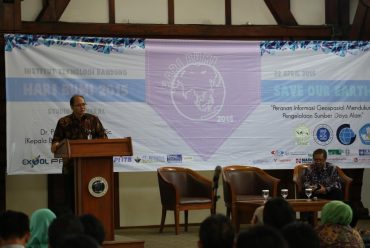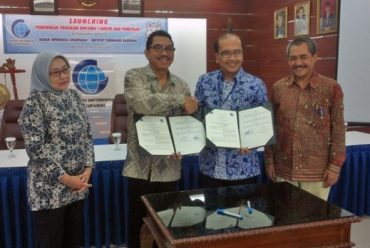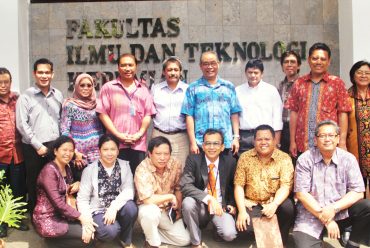There was an interesting experience when writers follow the field excursion to several places in the prefecture of Mie, Japan some time ago in the framework of the International Conference on Coastal Environment and Management: for the Future Human Lives in Coastal Regions (22 to 24 February 2009). The steering committee Prof. Masatomo Umitsu Nagoya University is supported by JSPS (Japan Society for the Promotion of Science) Asia and Africa Science Platform Program.
The conference was attended by some countries in Southeast Asia and South Asia such as Indonesia, Thailand, Vietnam, Bangladesh, and Japan as the host. Topic of the conference is very important for Indonesia as a disaster-prone country with a stretch of the coastal region one of the longest in the world. Very accordance with the statement of Prof. January Sopaheluwakan of LIPI as the keynote speaker at the conference about the need to identify existing challenges and the importance of community development are prepared for disasters in coastal areas. Field excursion to visit some places that were afflicted by disasters such as tsunamis and hurricanes. One of the cities visited by the time it is a city located in the region Nishiki Taiki, Mie prefecture, central Japan.
Rich mega-quake
Nishiki town is a small town and can be called “village” because the population is only about 2,200 people situated in a small valley bottom and at the end of the bay leading to the Pacific ocean. The city population was largely his livelihood as a fisherman and the rest farming. According to records, a couple of times a magnitude above M7,0 ever hit the city of Nishiki. Meio earthquake is a massive earthquake that struck the city on 20 September 1498 with the power M8,2-8,4. The last mega-earthquake hit this small town happened four years ago, namely on September 5, 2004 with M7,4 strength.
One quake had caused a tsunami that killed tens of locals are Showa-Tonankai earthquake that occurred on December 7, 1944 to force M7,9. The earthquake that makes local residents to jointly build prevention schemes tsunamis (tsunami prevention scheme).
The evacuation process became one of the important components in the face of the tsunami disaster. Sirens like anything that requires them to immediately leave the place to move? And to the evacuation shelter next to where should they go? In the city the population is already well aware of the two questions above. No sirens earthquake and tsunami is likely to have had they understood very well. The evacuation was already so they know because every second, every hour and every day they passed when will do activities like going fishing, farming, trade, to the government offices, or children who will go to school. In every corner there is a sign of the direction of evacuation. There are special evacuation to the place that was built by the local government and even a temple or temple also functioned as the evacuation of local residents.
Nishiki Tower
The impact of the earthquake and ensuing tsunami in 1944 became part of the history of the sustainability of the City Nishiki until the present moment. As a warning and the memories of how powerful the impact of the earthquake and tsunami when it built the tower Nishiki (Nishiki Tower) in 1998. The tower has a unique shape with a circular staircase to the upper end. The top is shaped like a dome of the mosque. The top of the dome-shaped lights mounted tapered. The tower height reached 22 meters to the top of the dome. Floor 4th and 5th functioned as shelters and evacuation can accommodate 500 people.
Uniquely, this tower also functioned as a museum on the third floor, recalled the situation during the earthquake and tsunami that time. Even still displayed the original wall clock submerged in sea water during the tsunami so that it looks exactly the bottom boundary wall clock rather dirty compared to the top. So conscientious Japanese people in the store and in memory of an object that are considered to be useful to progress in the future. The tower was built not without reason. The tower was built to shelter during a disaster, serves also as a meeting place of local communities and also has value as a symbol of peace without the disaster area.
Build
new culture
The emergence of mega-quake of the order of hundreds of years of repetition can also be a period of time in building a new culture. Culturally aware of impending disaster around our place (disaster awareness) and the culture of how to avoid such disasters (mitigation awareness), not against the disaster. Avoid means to conduct systematic ways to reduce the impact caused by the disaster, material and non-material. This is happening in Japan, especially in the City Nishiki.
How local residents realize that the region is very vulnerable to earthquake and what happens if the strength of the earthquake was very powerful. They also jointly identify potential homes, knowing geographically and topographically and also willing to jointly build disaster management scheme which would be assisted by the local government.
Early warning technology to specific disasters such as the tsunami so complex and may be difficult to understand ordinary people. Technology is technology. But more important is how people can learn and build unity in the face of disaster. Community based disaster awareness is what needs to be built in a systematic and sustained in Indonesia. Nishiki city dwellers do all this. So great `penghargaan` given by the population against disasters ever to hit their residence.
They always remember all of it in the form of a document that is recorded with a neat, objects remaining from the raging disaster then neatly framed in a story in the museum, even give signs on every corner of the city is reminiscent of how high the water that soaked their city.
The approach is very simple but it makes people into learning and memory, so that a new culture is embedded in each of the heart. Not to mention the form of the approach taken towards toddlers and elementary school. We need to imitate Japan in instilling important values in life, including building a new culture, a culture that is responsive to disasters. (Ketut Wikantika, Center for Remote Sensing & Faculty of Earth Sciences and Technology, ITB) ***
Author:
source http://newspaper.pikiran-rakyat.com/prprint.php?mib=beritadetail&id=93628







No Comments